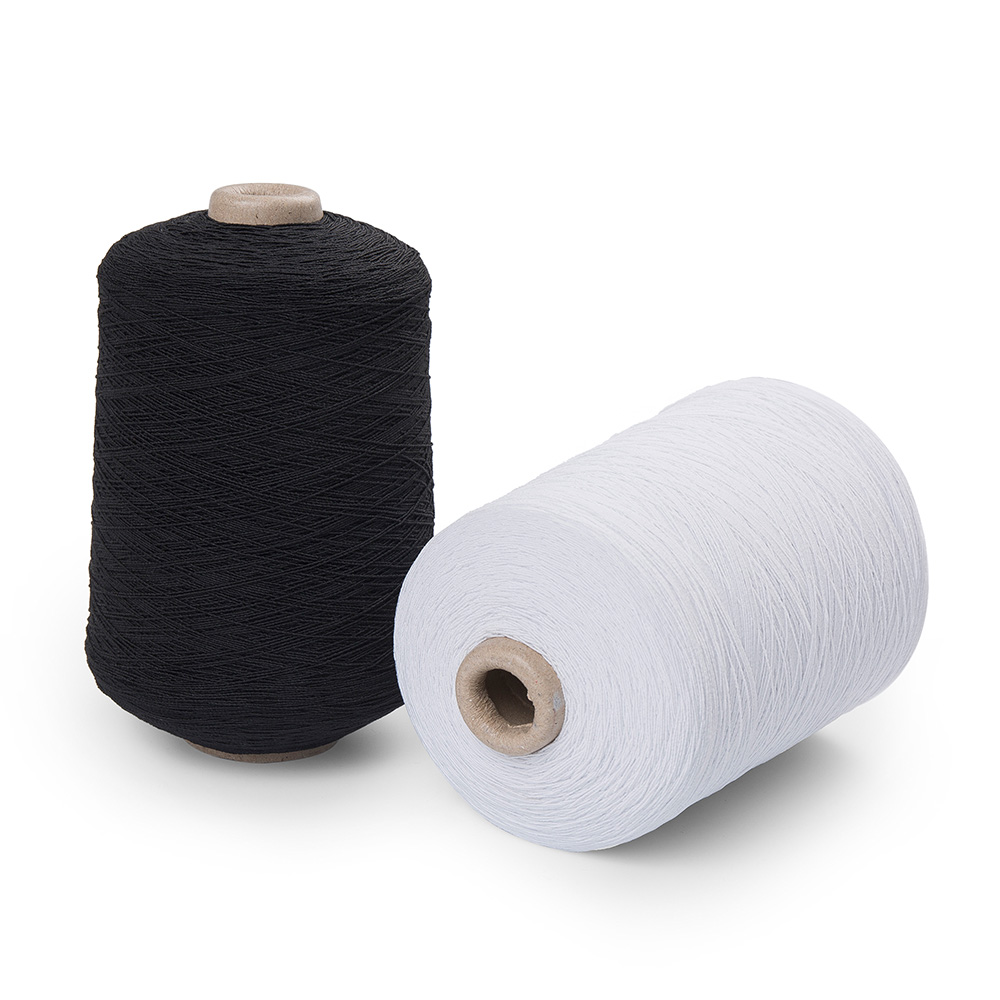If you are interested in some of our products, please feel free to visit our website or contact us for detailed information.

Rubber covered yarn offers several advantages that make it suitable for various applications. Here are some key advantages:
Elasticity and Stretchability: The rubber coating's unique ability to deform and revert to its original shape imparts exceptional elasticity to the yarn. This characteristic is particularly advantageous in applications requiring dynamic movement, as seen in activewear, undergarments, and medical textiles, where a combination of stretch and recovery is paramount for comfort and fit.
Durable and Long-lasting: The durability of rubber-covered yarn stems from its robust construction, where the rubber shield protects the core yarn from abrasion, friction, and general wear and tear. This longevity is a critical factor in industries such as manufacturing, where durable materials contribute to reduced maintenance costs and increased operational efficiency.
Resistance to Abrasion: The rubber layer acts as a resilient barrier against abrasive forces, making rubber-covered yarn particularly resistant to wear and abrasion. This property is invaluable in demanding applications such as conveyor belts, where constant friction and contact with surfaces could otherwise lead to premature degradation of the yarn.
Weather Resistance: The rubber coating forms a protective barrier that shields the yarn from the deleterious effects of environmental elements. This weather resistance is a critical factor in outdoor applications, ensuring the yarn's structural integrity and performance are maintained over extended periods despite exposure to sunlight, rain, and temperature fluctuations.
Versatility in Applications: Rubber-covered yarn's versatility extends across a wide spectrum of industries, from fashion and textiles to medical and industrial settings. Its adaptability to different manufacturing processes and end-product requirements makes it a preferred choice for diverse applications, showcasing its capability to enhance the performance of various products.
Enhanced Recovery Properties: The rapid recovery of rubber-covered yarn after being stretched is a testament to its resilience and consistent performance. In applications such as orthopedic braces, where sustained elasticity is crucial for providing support and maintaining shape, this property ensures the yarn meets the stringent demands of specialized use cases.
Reduced Friction and Noise: The rubber coating's dampening effect significantly reduces friction between fibers, contributing to smoother movement. This reduction in friction not only improves the longevity of the yarn but also decreases noise levels, making it a preferred choice in applications where quiet operation is a priority, such as in automotive components or industrial machinery.
Thermal Stability: The thermal stability of rubber-covered yarn ensures its performance remains consistent across a broad temperature range. This characteristic is particularly beneficial in industries like automotive manufacturing, where components may be exposed to varying temperatures during operation, ensuring the yarn maintains its integrity under diverse thermal conditions.
Chemical Resistance: Depending on the specific rubber formulation, rubber-covered yarn can exhibit resistance to a variety of chemicals. This chemical resistance is critical in applications where exposure to corrosive substances is anticipated, such as in chemical processing plants or medical environments, ensuring the yarn's structural integrity and performance are maintained over time.
Enhanced Adhesion: The enhanced adhesion between fibers due to the rubber coating contributes significantly to the overall strength and durability of the yarn. This property is of particular importance in applications where the yarn is subjected to tension or stress, such as in the production of high-performance textiles or industrial components, ensuring the yarn can withstand rigorous conditions without compromising its structural integrity.
Rubber Latex Thread Covered Polyester DTY Yarn

Rubber Latex Thread Covered Polyester DTY Yarn


 English
English Español
Español








